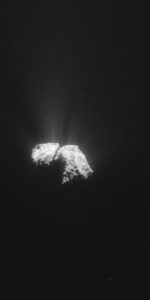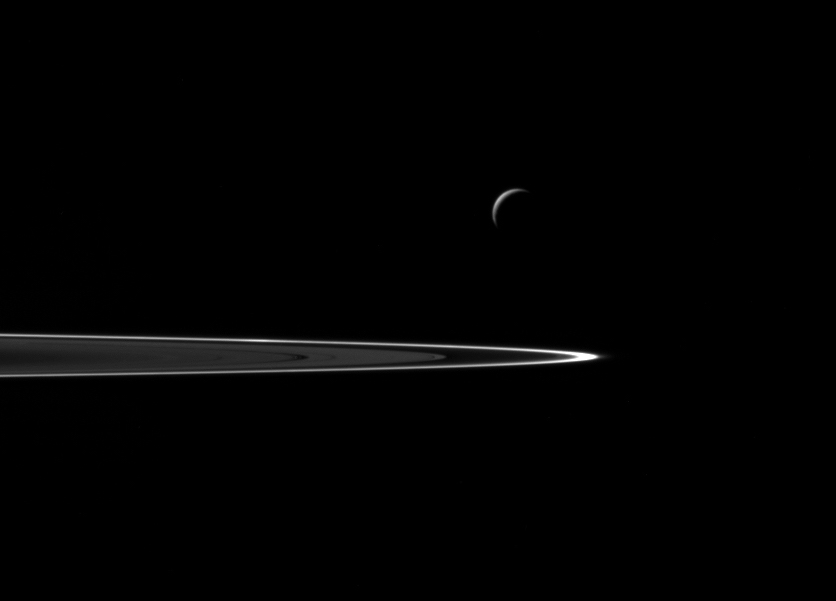
The Cassini spacecraft has successfully completed its deepest dive through the water vapor geysers of Enceladus and is now sending back some fantastic images of the event. These and subsequent images, as well as science data still to come, will help scientists better understand the incredible active geology occurring on this tiny, cold moon of Saturn.
During the flyby last Wednesday, Oct. 28, the spacecraft passed only about 30 miles (49 kilometers) above the surface of Enceladus. Cassini had previously made one closer flyby, but this one was the deepest the probe had flown through the geysers themselves. The geysers are located at the south pole of Enceladus, bursting through massive fissures in the icy surface called Tiger Stripes, originating from a salty ocean below the surface. Images and other data will continue to be sent back for several days. Details of the flyby were discussed during a NASA media teleconference last Wednesday.
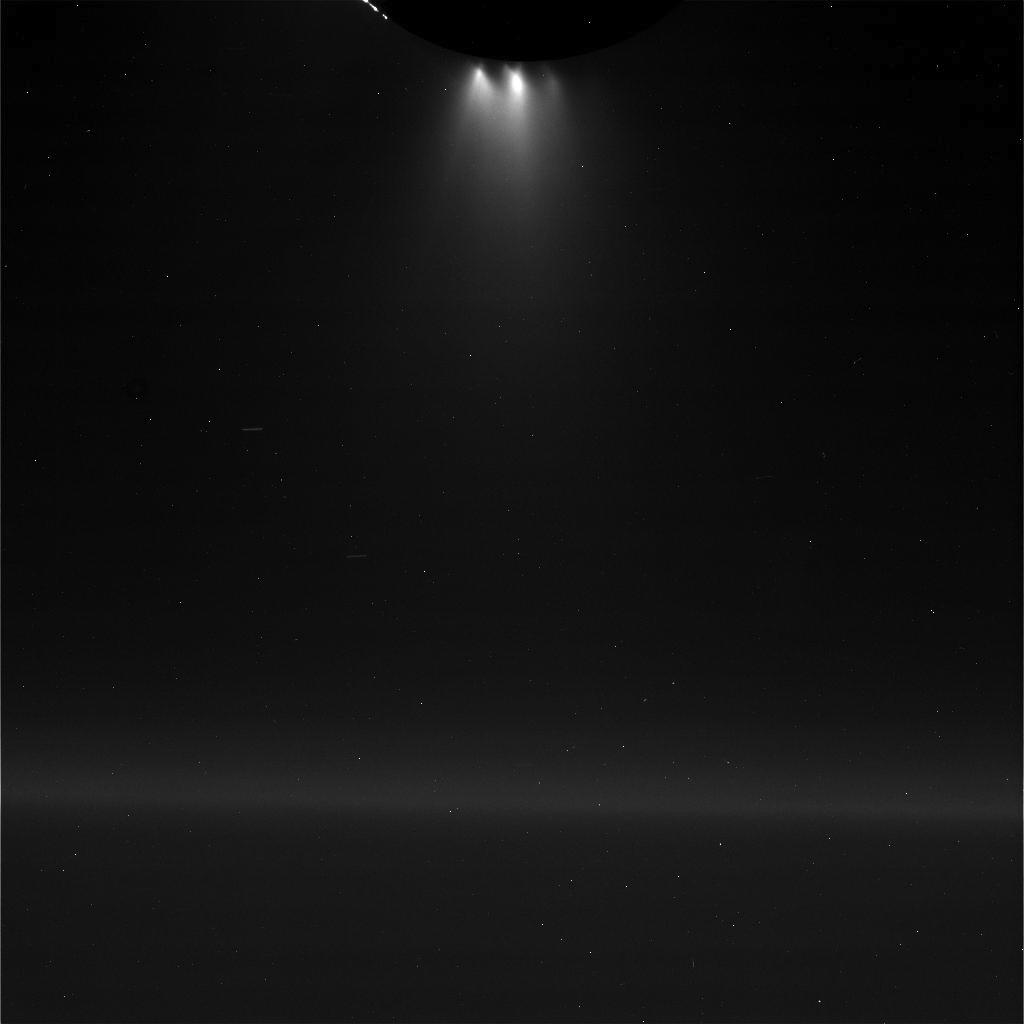
“Cassini’s stunning images are providing us a quick look at Enceladus from this ultra-close flyby, but some of the most exciting science is yet to come,” said Linda Spilker, the mission’s project scientist at NASA’s Jet Propulsion Laboratory in Pasadena, California.
The images show the moon, with geysers erupting, as Cassini approached, as well as closeup views of the surface during the flyby. Those closeup surface images need to be processed to remove blurring which occurred due to the spacecraft speeding past the moon at about 19,000 mph.
Additional raw images from the flyby can be seen here as they come in.
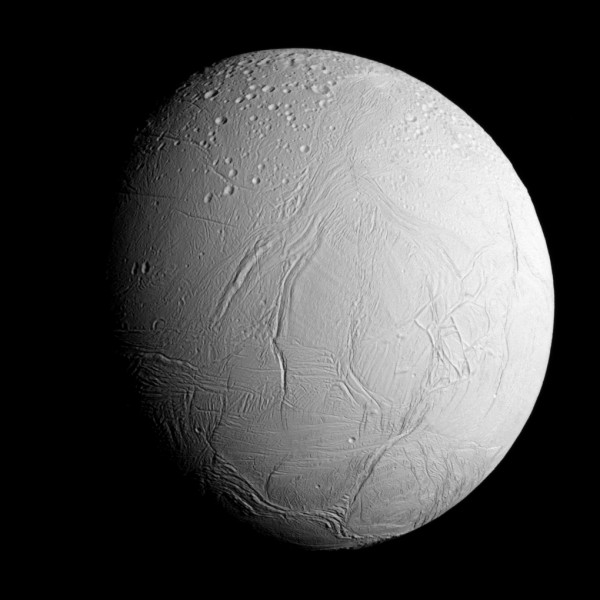
One of the primary and certainly most interesting aspects of the flyby is the analysis of the plumes themselves. Previously, Cassini had detected water vapor, ice particles, sodium, potassium, methane, carbon monoxide, carbon dioxide, and nitrogen, as well as both simple and complex organics. These findings have provided important clues as to the conditions in the ocean below the surface, pointing to current hydrothermal activity and heat, which make this a tentatively quite habitable environment for some kind of life, even if just microscopic. In Earth’s oceans, hydrothermal vents in deep oceans are oases for a rich variety of life where there is no sunlight. Could the same be true for Enceladus? The ocean bottom of Enceladus is also thought to be in contact with the rocky core, which could provide mineral nutrients for any putative life forms.
Scientists are also hoping that Cassini will find evidence for molecular hydrogen in the plumes, which would help to show how much activity is occurring on the ocean floor of Enceladus.
“Confirmation of molecular hydrogen in the plume would be an independent line of evidence that hydrothermal activity is taking place in the Enceladus ocean, on the seafloor,” said Hunter Waite, INMS team lead at Southwest Research Institute in San Antonio. “The amount of hydrogen would reveal how much hydrothermal activity is going on.”
“We’ve been following a trail of clues on Enceladus for 10 years now,” said Bonnie Buratti, a Cassini science team member and icy moons expert at NASA’s Jet Propulsion Laboratory in Pasadena, Calif. “The amount of activity on and beneath this moon’s surface has been a huge surprise to us. We’re still trying to figure out what its history has been, and how it came to be this way.”
As also noted by Curt Niebur, Cassini program scientist at NASA Headquarters in Washington, “Cassini truly has been a discovery machine for more than a decade. This incredible plunge through the Enceladus plume is an amazing opportunity for NASA and its international partners on the Cassini mission to ask, ‘Can an icy ocean world host the ingredients for life?’”
Since this flyby will go deeper into the plumes, scientists hope for an even more detailed analysis of heavier, more complex molecules, including organics. The CDA instrument can detect up to 10,000 particles per second in the plume, and is also expected to reveal how much material the plume is actually spraying into space. The first initial analysis results might be available within the next couple of weeks, with more detailed findings in the following weeks and months.
Cassini isn’t designed to look for life itself, but it can identify complex organics in the plumes. It has already done so, but scientists are hoping that it can find more complex organic molecules than have already been seen, since it passed through lower portions of the plumes, closer to the surface.
Like Jupiter’s moon Europa, which also has a subsurface ocean of salty water, Enceladus is now considered to be one of the best places to search for life elsewhere in the Solar System. Not that long ago, it wasn’t even known that such water worlds existed; now they seem to be fairly common, perhaps in other Solar Systems as well.
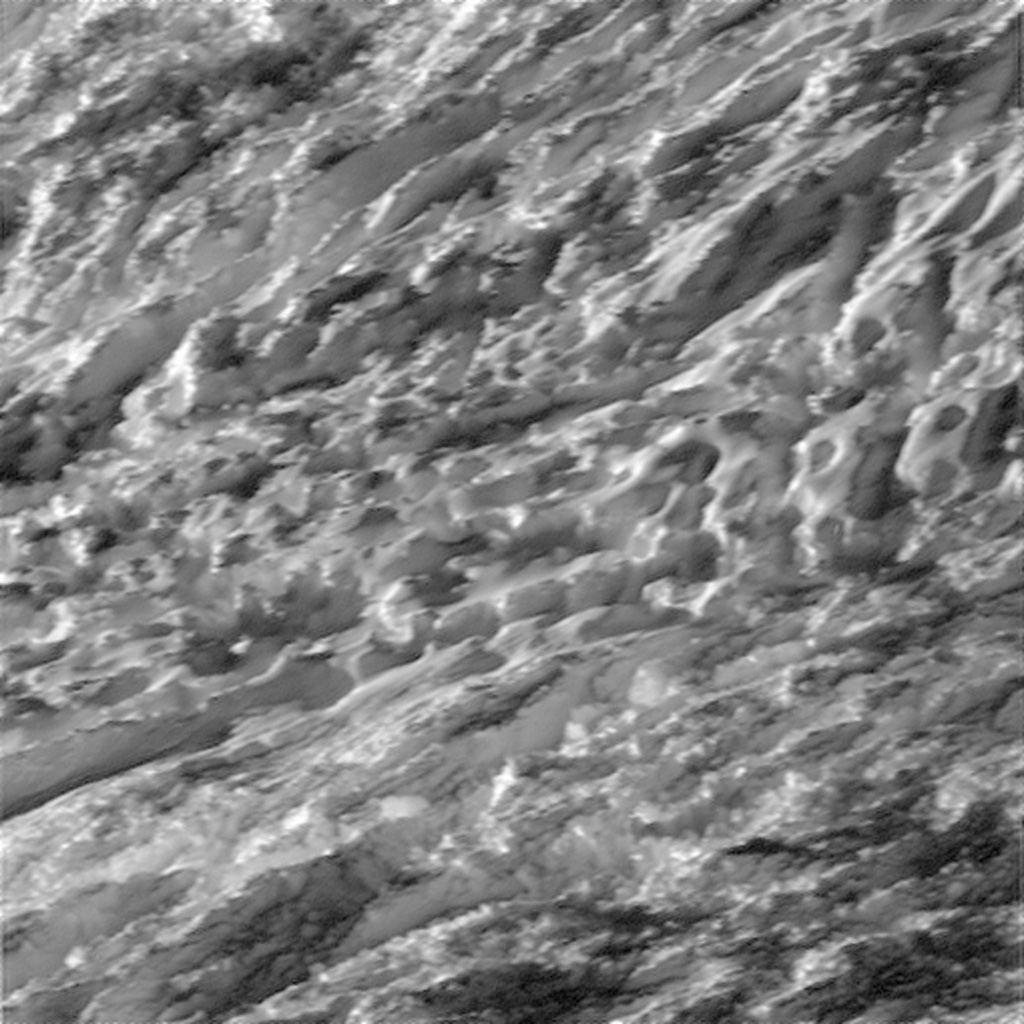
The first closeup image of the surface during the flyby shows the terrain at 57 degrees south latitude and 324 degrees west longitude, from a distance of approximately 77 miles (124 kilometers), with image scale of 49 feet (15 meters) per pixel.
“We’ll continue observing Enceladus and its remarkable activity for the remainder of our precious time at Saturn,” said Spilker. “But these three encounters will be our last chance to see this fascinating world up close for many years to come.”
For easy reference, a summary of seven key points about the flyby is available here.
Cassini has been orbiting Saturn since 2004, with the mission scheduled to end in 2017. The Cassini-Huygens mission is a cooperative project of NASA, ESA (European Space Agency) and the Italian Space Agency. JPL manages the mission for NASA’s Science Mission Directorate in Washington.
Continue to follow AmericaSpace for more updates as they become available. Further images and science results will be released in the coming days and weeks, so stay tuned. More information about the Cassini mission is also available here.
Be sure to “Like” AmericaSpace on Facebook and follow us on Twitter: @AmericaSpace
.




